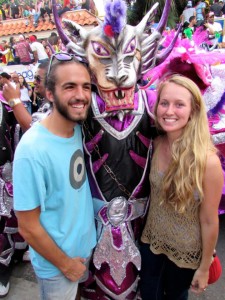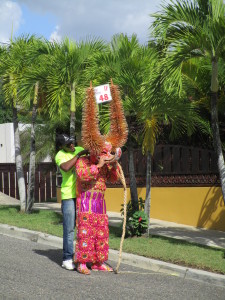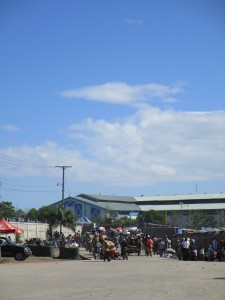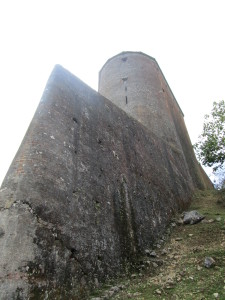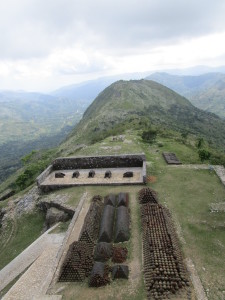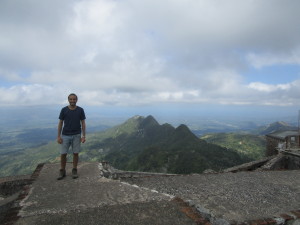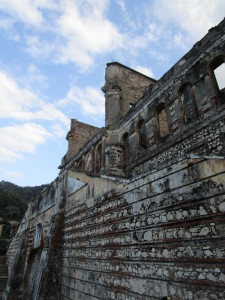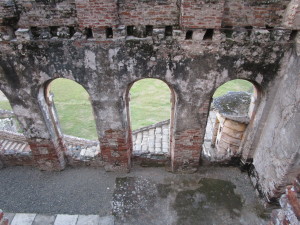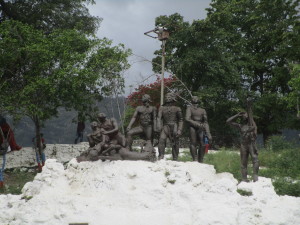In this post I will write about a Dominican tradition that actually spans many more countries, including the US. It is carnaval!
You may have heard of Mardi Gras in the US, but here in the DR we call it carnaval. Carnaval is a festival that takes place every Sunday during the entire month of February in the Dominican Republic. Every Sunday in a number of different cities across the country, people dress up in costumes that resemble the devil, and dance in the streets. It seems odd that such a catholic country would celebrate the devil, but they are actually doing the exact opposite. This whole festival is dedicated to making fun of the devil. It is for this reason that the costumes and decorations are way over the top, and people can be very “sinful” without fear of consequences. The DR tends to be very conservative, so carnaval is a way for people to let loose from social norms and either show who they really are or just go wild without judgement. There were people that simply dyed their hair crazy colors, all the way to cross dressers that were a bit more convincing than I would like to admit. I was able to experience carnaval in two different cities. First in La Vega, and then in Santiago, where I am currently living and studying. Each region of the country has their own characters and versions of the devil, but for this post I’ll just focus on the two that I witnessed.
La Vega
In La Vega, the masks that dancers wore were very scary looking. They had multiple horns sticking out of their faces and also had very sharp teeth. To get a better understanding of this, I have a picture below.
Here I am pictured with a street dancer as well as fellow Big 10 student Emily King (IU). As you can see in the background, there are people hanging out on the roofs of houses nearby, and many more in the street behind us. There are so many people in fact, that sidewalk space is limited. Dancers carry vejigas, or inflated cow bladders. They hit people on the behind who are not paying attention as well as those standing in the streets. Some of the vejiga hits we received were not too bad, but some hits actually hurt a bit so it’s best to avoid them all together if you can. The stores and businesses along the loop where carnaval takes place were all open and bustling. As many things as possible were themed along with the devil theme of carnaval. I even found a local store where a man was selling drinks called the “Red Devil”. I’m not sure exactly what was in it, but I ended up going back for another because it was so good. I’ve heard that La Vega has one of the most boisterous carnaval celebrations in the entire country, so I’m glad that I was able to experience it.
Santiago
The other city where I experienced carnaval in was where I am currently living, in Santiago. The costumes here have a more elongated nose as well as longer horns. The overall design of the mask is simpler, but their clothes are just as elaborate. My neighbor from across the street was a dancer in this year’s carnaval, so I was able to get a good shot of him putting on his mask.
As you can see he is holding a whip in his left hand. The dancers in Santiago’s carnaval are famous for their whips. As they dance down the street, they crack their whips all while dancing and not knocking their masks over. It’s quite an impressing sight to witness. My neighbor was practicing with his whip before heading down to the center of the city, so I was lucky enough to get a video of him practicing. Here it is below.
Carnaval is one of the craziest and most famous street festivals in the world, and I’m glad I got to experience it twice.
Photo of the Week
Here is one of the many examples of the awesome nature of the Dominican Republic. Last weekend, we went to the peninsula of Samaná. On the way there, we stopped at a roadside cave. The cool thing about this cave is that it was not known about until the highway was constructed. Later in the weekend, we visited other caves further down the peninsula. That’s it for now, see you soon!
Location: La Vega, Dominican Republic


